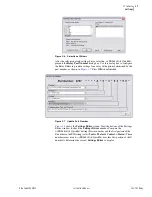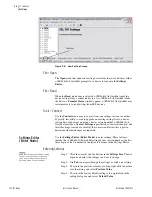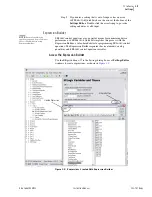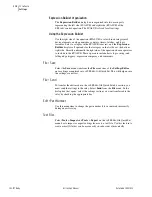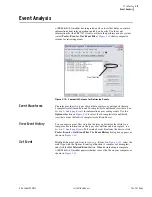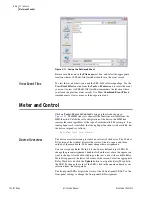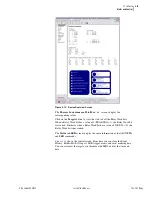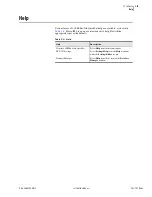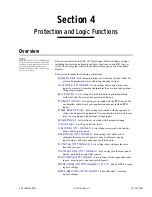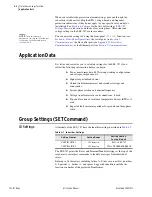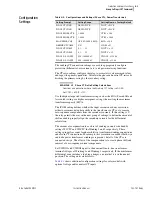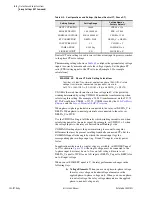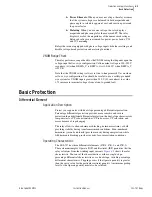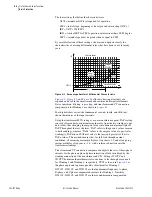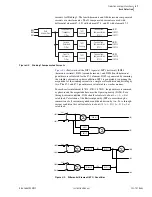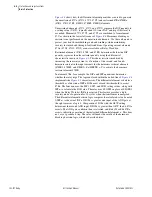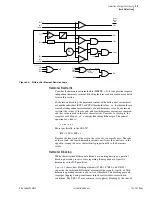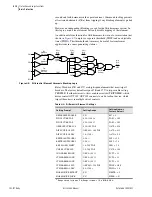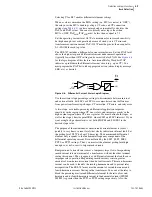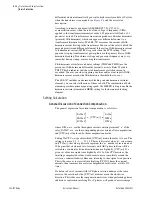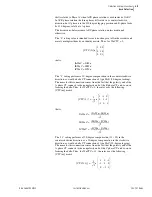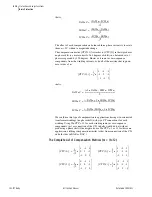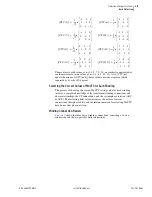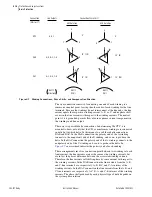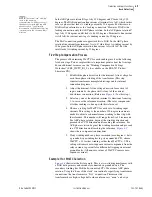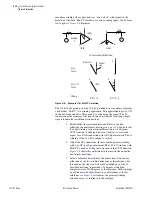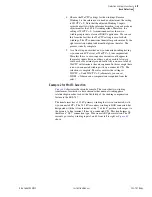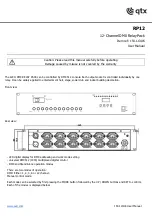
4.5
Date Code 20081022
Instruction Manual
SEL-787 Relay
Protection and Logic Functions
Basic Protection
➤
Power Elements.
When you use one voltage, the relay assumes
that the system voltages are balanced in both magnitude and
phase angle to calculate apparent, real, and reactive power and
the power factor.
➤
Metering.
When you use one voltage, the relay displays
magnitude and phase angle for the measured PT. The relay
displays zero for the magnitudes of the unmeasured voltages.
Balanced voltages are assumed for power, power factor, VG,
and 3V2 metering.
Relays that are not equipped with phase voltage inputs hide these settings and
disable voltage-based protection and metering functions.
VNOM Range Check
The relay performs a range check for the VNOM setting that depends upon the
voltage-input delta or wye configuration. Valid nominal voltage is 100–250 V
secondary (l-l) when DELTA_Y is DELTA; it is 100–440 V when DELTA_Y
is WYE.
Note that the VNOM setting is always in line-to-line primary kV, even when
set for a wye configuration. You should be careful to use a solidly-grounded
wye system for VNOM inputs greater than 250 V (l-l, secondary) to avoid a
1.73 increase in terminal voltages from a line-to-ground fault.
Basic Protection
Differential Element
Application Description
Protect your apparatus with dual-slope percentage differential protection.
Percentage differential protection provides more sensitive and secure
protection than traditional differential protection; the dual-slope characteristic
compensates for CT ratio mismatches, CT ratio errors, CT saturation, and
errors because of tap changing.
The relay allows to choose harmonic blocking, harmonic restraint, or both,
providing stability during transformer inrush conditions. Even-numbered
harmonics (second and fourth) provide security during energization, while
fifth harmonic blocking provides security for overexcitation conditions.
Operating Characteristic
The SEL-787 has three differential elements (87R-1, 87R-2, and 87R-3).
These elements employ Operate (IOP) and Restraint (IRT) quantities that the
relay calculates from the winding input currents.
shows the relay
characteristic. You can set the characteristic as either a single-slope,
percentage differential characteristic or as a dual-slope, variable-percentage
differential characteristic. Tripping occurs if the Operate quantity is greater
than the curve value for the particular restraint quantity. A minimum pickup
level for the Operate quantity must also be satisfied.
Summary of Contents for SEL-787
Page 1: ...20081022 SEL 787 Transformer Protection Relay Instruction Manual PM787 01 NB ...
Page 6: ...This page intentionally left blank ...
Page 12: ...This page intentionally left blank ...
Page 18: ...This page intentionally left blank ...
Page 78: ...This page intentionally left blank ...
Page 206: ...This page intentionally left blank ...
Page 280: ...This page intentionally left blank ...
Page 334: ...This page intentionally left blank ...
Page 376: ...This page intentionally left blank ...
Page 388: ...This page intentionally left blank ...
Page 474: ...This page intentionally left blank ...
Page 508: ...This page intentionally left blank ...

